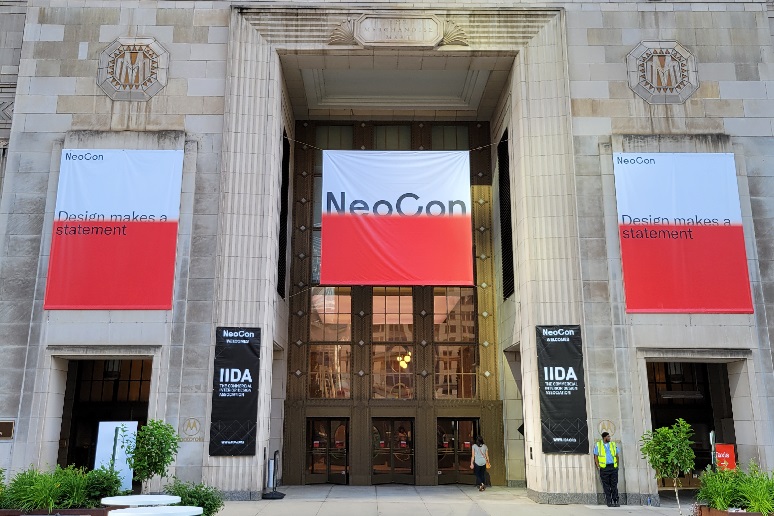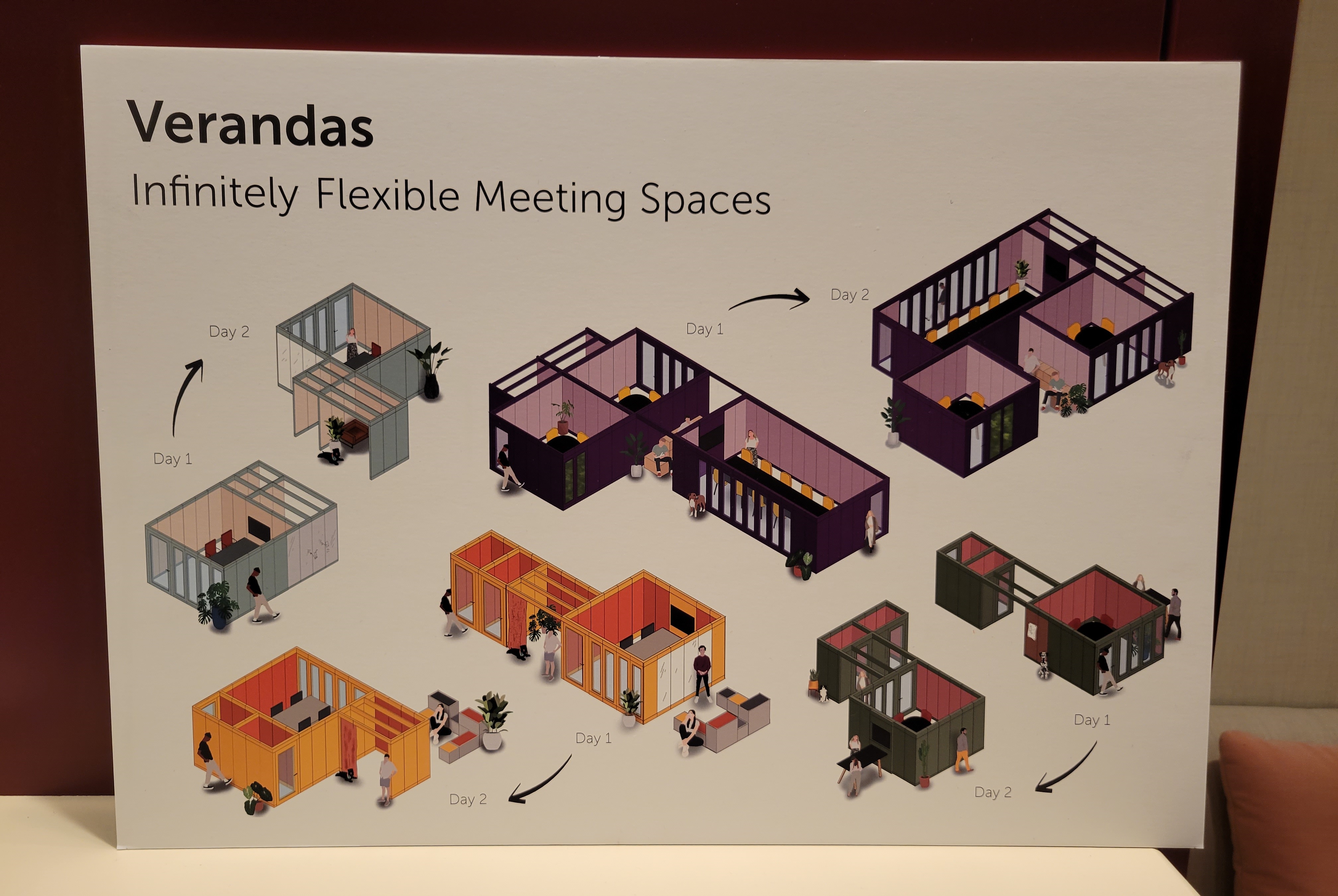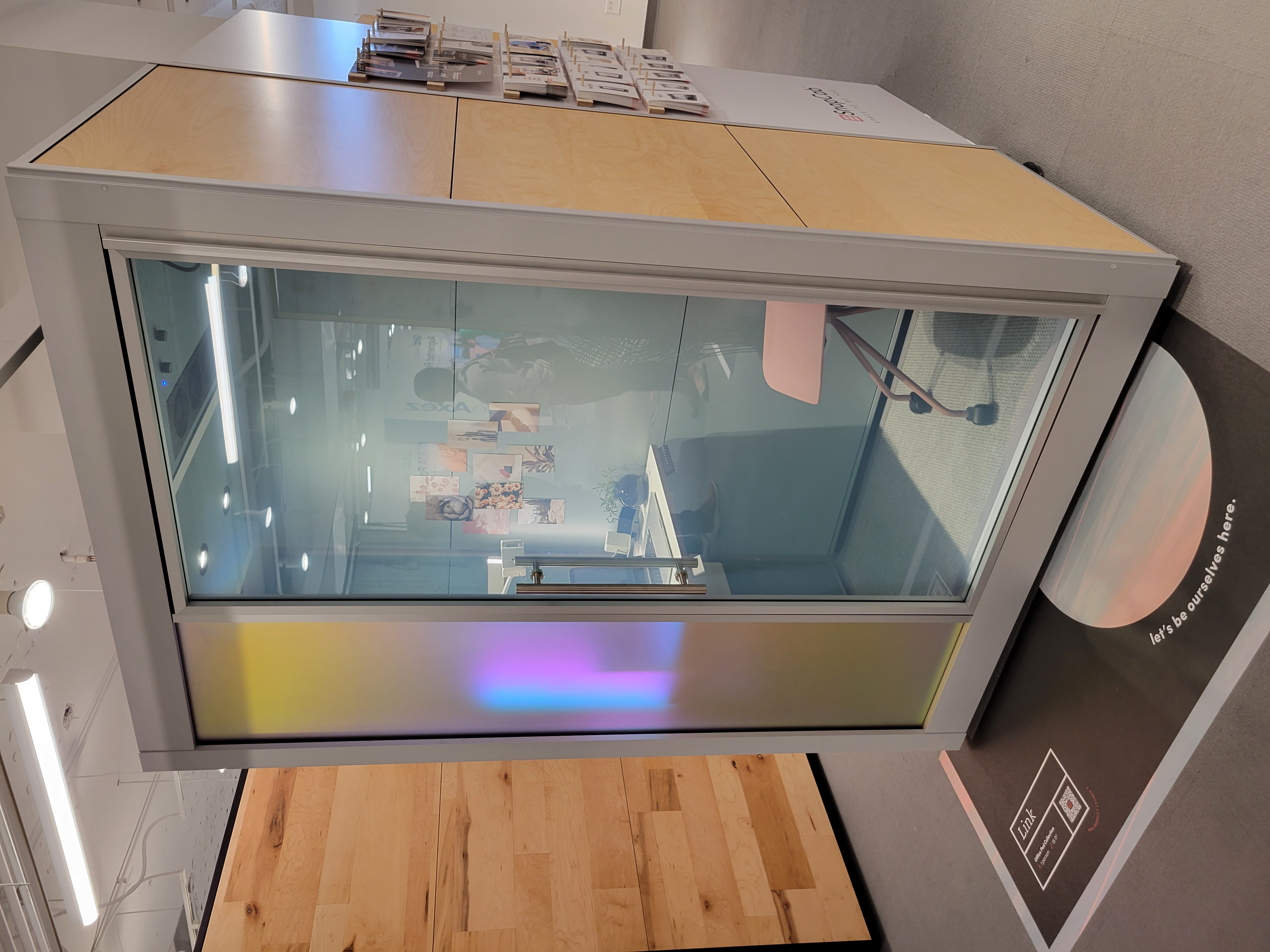At the commercial interior design event NeoCon 2022, interior designers, manufacturers, and workplace decision-makers gathered to discuss current challenges and how the industry might plot a course forward. While discussions around creating and boosting sustainable design permeated the event, another issue loomed large across the three-day event — how to enable a flexible and hybrid workplace.
During my time at the event, I had the opportunity to meet with a host of companies providing products and services designed to enable the hybrid work office, and after looking at the products on display and discussions on the expo floor, I noticed several key emerging trends. Below, I highlight three of these trends and how they might influence workplace decision-makers moving forward.
1. Workplace flexibility as a holistic strategy
As we’ve often reported on WorkSpace Connect,
workplace flexibility will be a key aspect of keeping employees happy as the future of work unfolds. But while we often think about workplace flexibility through the lens of HR policies and how it relates to workplace culture, workplace flexibility extends to the physical workspaces themselves and the products and services that workplace leaders rely on.
For a look at how flexible meeting rooms are possible, furniture maker Spacestor shared its portfolio of products in its showroom space, including its customizable
Verandas option. With Verandas, workplaces can use panels and in-room amenities to configure their meeting spaces to meet specific collaboration needs. If a workplace ever needs to make a change to the space (like reducing or expanding it), they can simply reconfigure the set-up and reuse the material from the initial space. In addition to this meeting room option, the company also features the
Arcadia line, which provides a modular, reconfigurable way to create office dividers, enclosed spaces, meeting rooms, and booths.
To understand how a space might need to be reconfigured to best meet the needs of the employees, workplace leaders might leverage space utilization software like
Density. Density uses heat signature data collected by sensor devices in a space to create heat maps, which workplace leaders can use to pinpoint areas of low traffic and areas that might be underutilized. Workplace leaders can access this information with a dashboard, a Density representative explained. Since the software is only capturing heat signatures, Density isn't collecting any of the employee’s personal identifiable information.
Being able to change workspaces on the fly isn’t limited to just moving around furniture or finding underutilized spaces. It can also include the cabling that powers these spaces and the equipment in them. As discussed in
an article on our sister website No Jitter, addressing cabling issues in the workplace can be instrumental in freeing up valuable space and improving the appearance of an office.
Aiming to simplify making changes to an office space’s cable system,
FreeAxez demonstrated Gridd, a raised floor system for cable management which rests in-between the carpeting or panel and the floor itself. Instead of wall-mounting cables or having them running across the floor, cables can be placed inside the
Gridd system, allowing facility management, IT, and maintenance professionals to hide the cables from view while keeping them relatively easy to access. When someone needs to make changes to the cabling system, they can peel back the carpeting/paneling and then make the changes accordingly. Also, with the Gridd Mobile app, workplace professionals can record changes to the cabling layout and use an augmented reality feature to find where cables are currently located.
2. Workplace pods — a home office away from home
As more employees head back into the office, they are finding the workplace is noisier than their home office. While this is a problem for many employees, it can be especially disruptive to neurodiverse employees. Design firm HOK found that 77% of 200 neurodiverse employees said they were hypersensitive to noise and sound in the workplace, as I shared in
this WorkSpace Connect article, and the return to the office can present noise challenges for people used to the soundscape in their home set-up. To address these challenges, workplace leaders need to ensure that they can provide easily accessible quiet spaces for employees. This is where work pods and booths can be useful.
Workplace pod and booth companies shared their products and how they can be used to create ad-hoc quiet places in the office. Among the workplace pod and booth companies that exhibited at the event:
- Nook shared its pod for ad-hoc team collaboration (Huddle Pod) and its semi-private Solo Booth. These pods include acoustic upholstery, a power source with USB outlets, and mobile and locking wheels, which workplace leaders can use to move pods without the need to disassemble them. Customers can customize the exterior, inner panels, and other aspects of the Nook pods and booths with a number of color options, and the Huddle Pod can be equipped with a whiteboard.
- SnapCab showcased its range of customizable phone booths and pods. Each pod and booth comes with motion-activated ventilation, dimmable LED lights, power outlets with fast charge USB, and the frame, panels, ceiling, and flooring options can be customized with a number of color options. At NeoCon, SnapCab also launched its single-occupancy Link product, an elongated booth designed for video conferencing meetings in mind.
- Zenbooth featured its product portfolio, including a one-person phone booth (Solo), a two-person meeting pod (Duo), and a private office configuration (Quad). These options comes equipped with soundproofing insulation, power outlets, ventilation, skylight lighting, and a desk (an adjustable desk is available at an extra charge). Customers have the option to choose between a maple exterior and interior or a white exterior and maple interior finish.
3. Whiteboarding gets physical (again)
To simulate the in-office brainstorming experience, many workplaces rolled out digital whiteboard apps and
visual collaboration tools to allow remote or hybrid workers to share, log and organize ideas in collaborative conversation. However, the traditional dry-erase board is a workplace amenity that is still seeing plenty of use, and vendors like Claridge, Peter Pepper Products, and Wallrite were on-site to share their products.
At its booth,
Wallrite shared its materials to cover walls for whiteboarding purposes, available in a traditional whiteboard and a digital whiteboarding option. Bridging the at-home and in-office whiteboard experience, Wallrite also offers a Homeoffice Kit that includes a self-adhesive whiteboard, whiteboard pens, a pen holder, a microfiber cloth, and magnets. With a downloadable app that works with the Homeoffice Kit, employees can take a picture of their in-office whiteboard and have it digitized for virtual collaboration purposes.
Writing surface company
Claridge also displayed its range of mounted whiteboards, modular whiteboards, and mobile whiteboards products, available in either glass or LCS Porcelain steel options. Additionally,
Peter Pepper Products featured its Visual Communication Panels, a movable partition with a whiteboard panel. Customers can also add a small cabinet or shelf to the partition for an extra cost.
Making the Future of Work a Reality
While the three-day industry event was geared toward providing design professionals with education and resources to tackle their day-to-day challenges, it also provided a lens to view the future of work. Some of the key workplace trends of this year — like workplace flexibility — were a throughline of the event, and exhibitors across the industry shared how their products and services might help make the future of work a reality.








